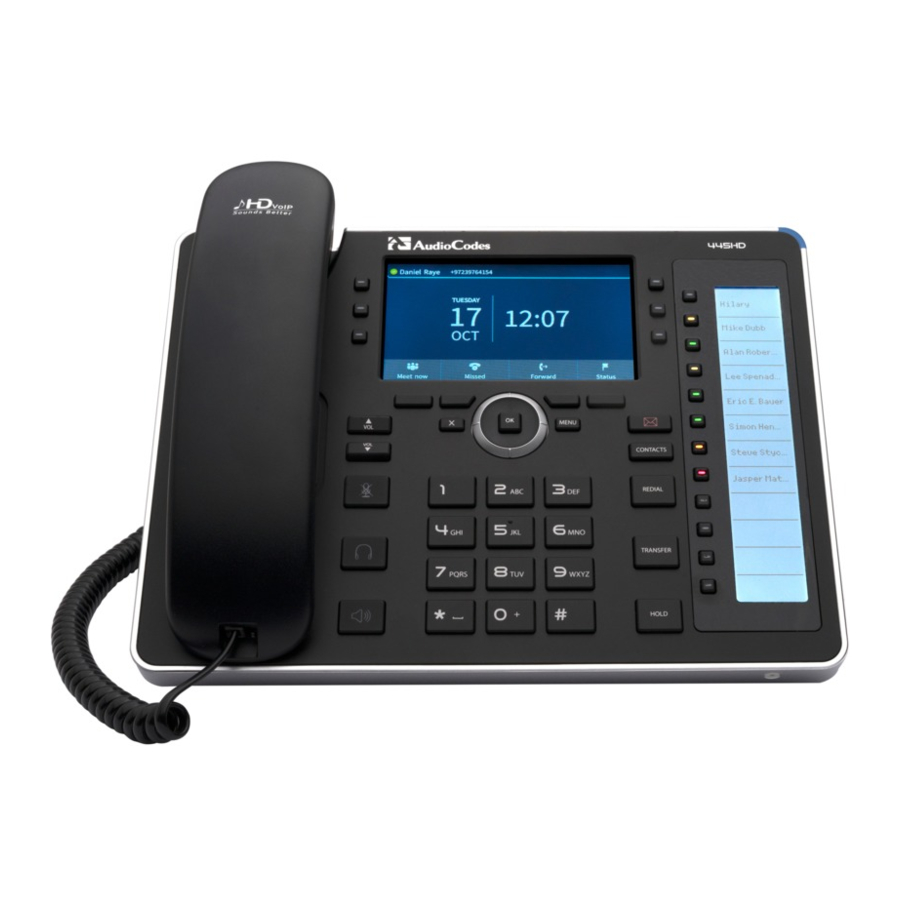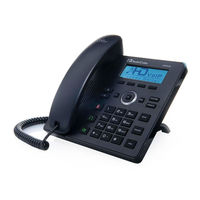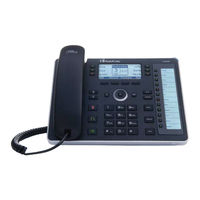
User Manuals: AudioCodes 445HD IP Phone
Manuals and User Guides for AudioCodes 445HD IP Phone. We have 8 AudioCodes 445HD IP Phone manuals available for free PDF download: Administrator's Manual, User Manual, Quick Manual
AudioCodes 445HD Administrator's Manual (242 pages)
High Definition IP Phones Series
Brand: AudioCodes
|
Category: IP Phone
|
Size: 4 MB
Table of Contents
-
Introduction17
-
Phone Screen19
-
File Syntax20
-
CSV File22
-
Usage23
-
Configuring Keys130
Advertisement
AudioCodes 445HD Administrator's Manual (235 pages)
Brand: AudioCodes
|
Category: IP Phone
|
Size: 7 MB
Table of Contents
-
-
-
-
-
-
-
-
-
EAP MD5 Mode103
-
EAP TLS Mode103
-
-
-
EAP MD5 Mode104
-
EAP TLS Mode105
-
-
-
Park Call123
-
Location125
-
-
-
-
Troubleshooting155
-
Boss Admin156
AudioCodes 445HD User Manual (126 pages)
for Microsoft Skype for Business
Brand: AudioCodes
|
Category: IP Phone
|
Size: 4 MB
Table of Contents
-
-
-
Softkeys20
-
4 Signing in
25-
Signing out32
-
Hot Desking35
-
-
-
Making Calls78
Advertisement
AudioCodes 445HD User Manual (102 pages)
Generic SIP
Brand: AudioCodes
|
Category: IP Phone
|
Size: 4 MB
Table of Contents
AudioCodes 445HD User Manual (104 pages)
High-Definition IP Phones
Brand: AudioCodes
|
Category: IP Phone
|
Size: 4 MB
Table of Contents
-
Notice7
-
Unpacking10
-
Front View11
-
Rear View13
-
Cabling14
-
Softkeys18
-
Dialing58
-
Redialing59
-
Ending Calls67
AudioCodes 445HD Quick Manual (12 pages)
Brand: AudioCodes
|
Category: IP Phone
|
Size: 1 MB
Table of Contents
AudioCodes 445HD Quick Manual (11 pages)
Brand: AudioCodes
|
Category: IP Phone
|
Size: 0 MB
Table of Contents
AudioCodes 445HD Quick Manual (5 pages)
Brand: AudioCodes
|
Category: IP Phone
|
Size: 0 MB







